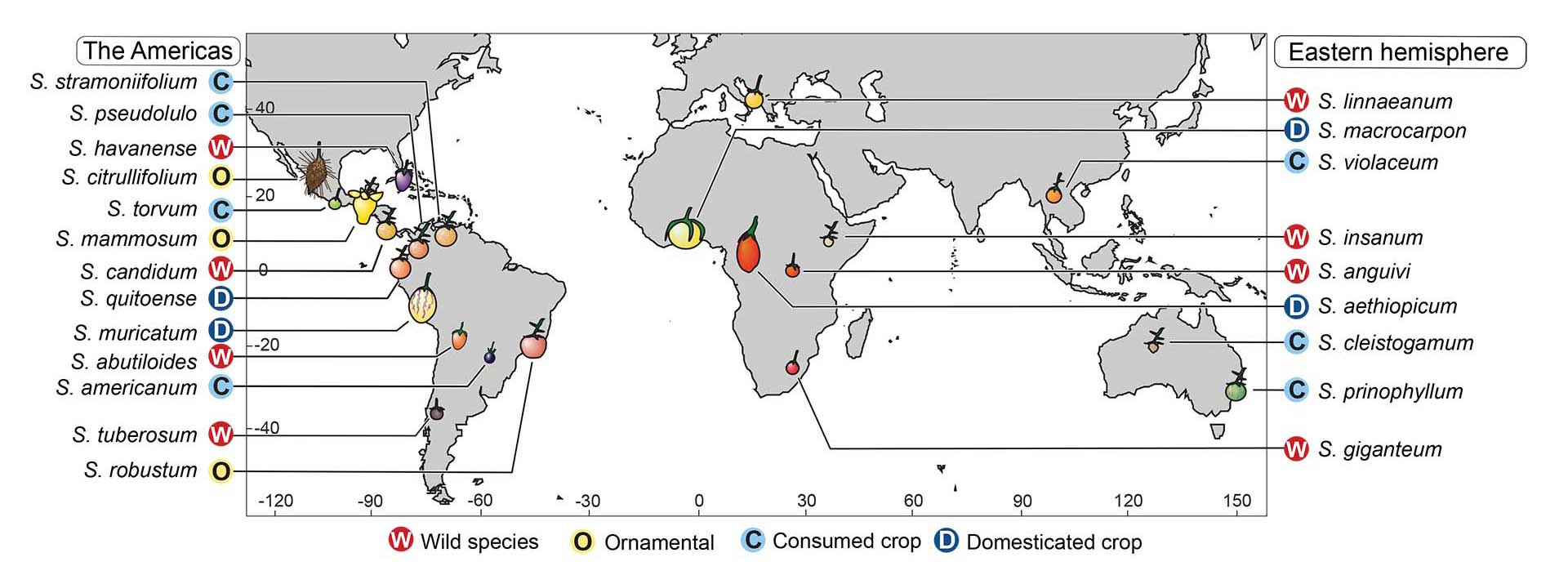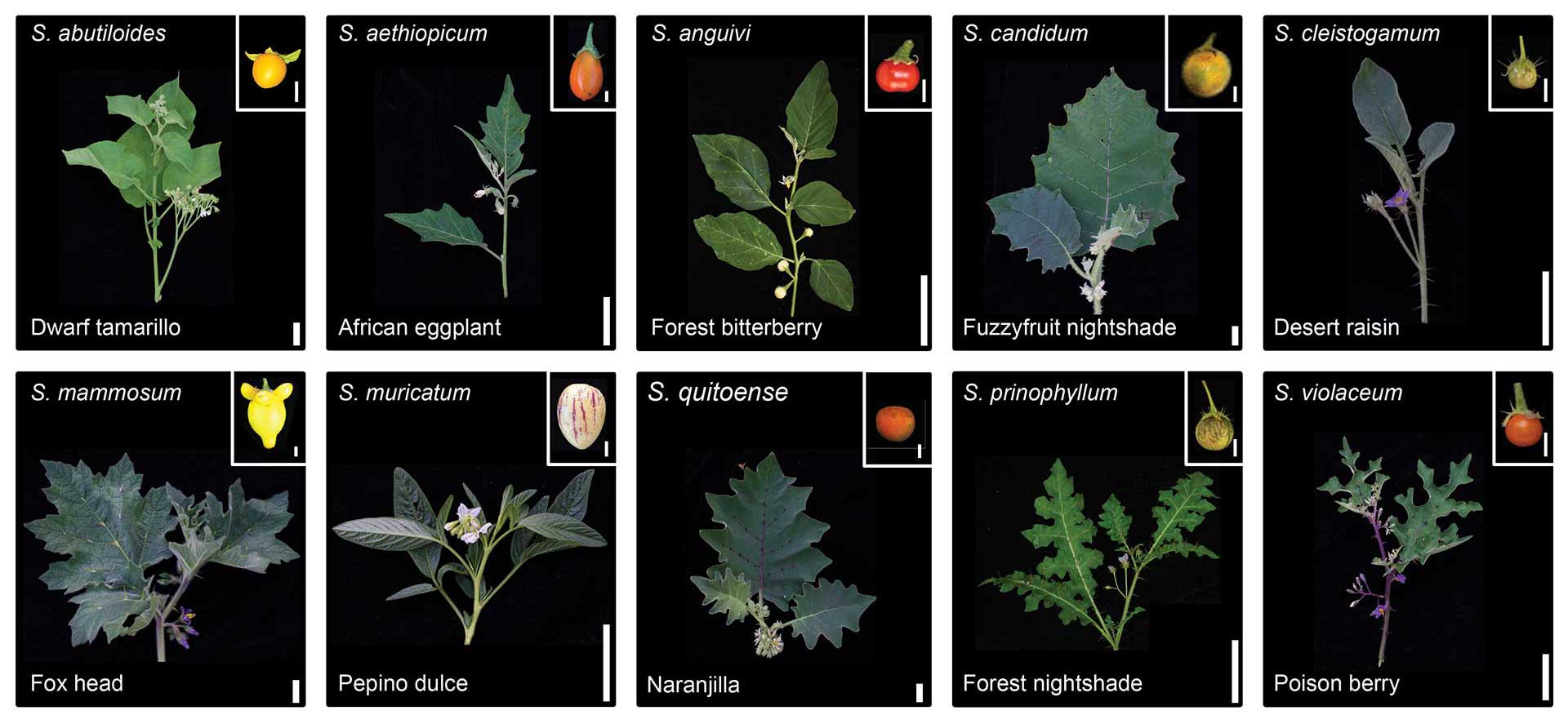Cold Spring Harbor, New York, USA
March 5, 2025
 As part of a landmark study, African eggplant crops (inset) cultivated from a field in Mukono, Uganda (left) underwent trait analysis at Uplands Farm in Cold Spring Harbor, NY (right).
As part of a landmark study, African eggplant crops (inset) cultivated from a field in Mukono, Uganda (left) underwent trait analysis at Uplands Farm in Cold Spring Harbor, NY (right).
About 75 percent of the world’s food comes from 12 plants. Scientists estimate up to 30,000 species are edible. Not only does this bottleneck jeopardize our food supply if a major crop is impacted by drought or disease—it also limits our choices at the grocery store. For years, breeders have struggled to expand food selection. Part of the reason is a problem familiar to biologists. The same methods of selecting for advantageous traits can produce different results in related species. Now, Cold Spring Harbor Laboratory (CSHL) has unearthed a likely solution to the predictability issue.
CSHL researchers and colleagues around the globe have sequenced dozens of complete genomes for the plant genus that includes tomatoes, potatoes, and eggplants. In a process they deem “pan-genetics,” the biologists use their new, high-quality pan-genome to map the genes behind specific traits of agricultural significance across the genus, and target those genes to create desirable mutations. Their research reveals the importance of understanding the evolution of paralog genes—those that arise through gene duplication—in predicting genome editing outcomes. CSHL Professor & HHMI Investigator Zachary Lippman led the study. He says:
“There’s a lot of wonderful food crops out there. How many of them have not received the attention they would benefit from, compared to ‘major’ crops?”
 This map illustrates the approximate central growing locations and agricultural uses of 22 indigenous crops included in the Solanum pan-genome.
This map illustrates the approximate central growing locations and agricultural uses of 22 indigenous crops included in the Solanum pan-genome.
Researchers have studied gene duplication for decades. But how paralogs relate to physical changes across species has not been deeply studied—until now. Lippman collaborated with colleagues on four continents to fill this gap. Importantly, their biggest breakthroughs didn’t come from plants in Lippman’s backyard. Instead, it was African eggplant. A tomato relative indigenous to the sub-Saharan region, African eggplant varies highly in fruit shape, color, and size.
Lippman and longtime collaborator Michael Schatz at Johns Hopkins University turned to a breeder in Uganda to exchange ideas and expertise. Mapping tens of thousands of paralogs, the team identified a previously unknown gene in African eggplant that affects fruit size. The paralog has the same function in tomatoes. The team, involving Joyce Van Eck from the Boyce Thompson Institute and Matthias Benoit from INRAE, discovered they could influence tomato size by editing it.
 These images highlight the remarkable diversity of plant shoots and fruits among just one subset of Solanum species in the pan-genome.
These images highlight the remarkable diversity of plant shoots and fruits among just one subset of Solanum species in the pan-genome.
“Reciprocal exchange between indigenous and major crops creates new, predictable paths for better breeding,” says Benoit. “This is key to boost the diversity and resilience of the food system.”
“Crop diversity benefits nutrition, choice, and health,” Lippman adds. Determining how related paralogs function across species could help improve crop yields, flowering times, and food selection. In other words, it’s a win-win-win for scientists, farmers, and consumers everywhere.
Funding
INRAE, National Science Foundation, Hearst Foundations, The Ohio State University, Universidad Nacional de Colombia, Minciencias, Uganda Christian University, The Sibbald Trust, Fonds de recherche du Québec, National Geographic Society, National Institutes of Health, NSF Plant Genome Research Program, Howard Hughes Medical Institute
Citation
Benoit, M., et al., “Solanum pan-genetics reveals paralogues as contingencies in crop engineering”, Nature, March 5, 2025. DOI: 10.1038/s41586-025-08619-6a